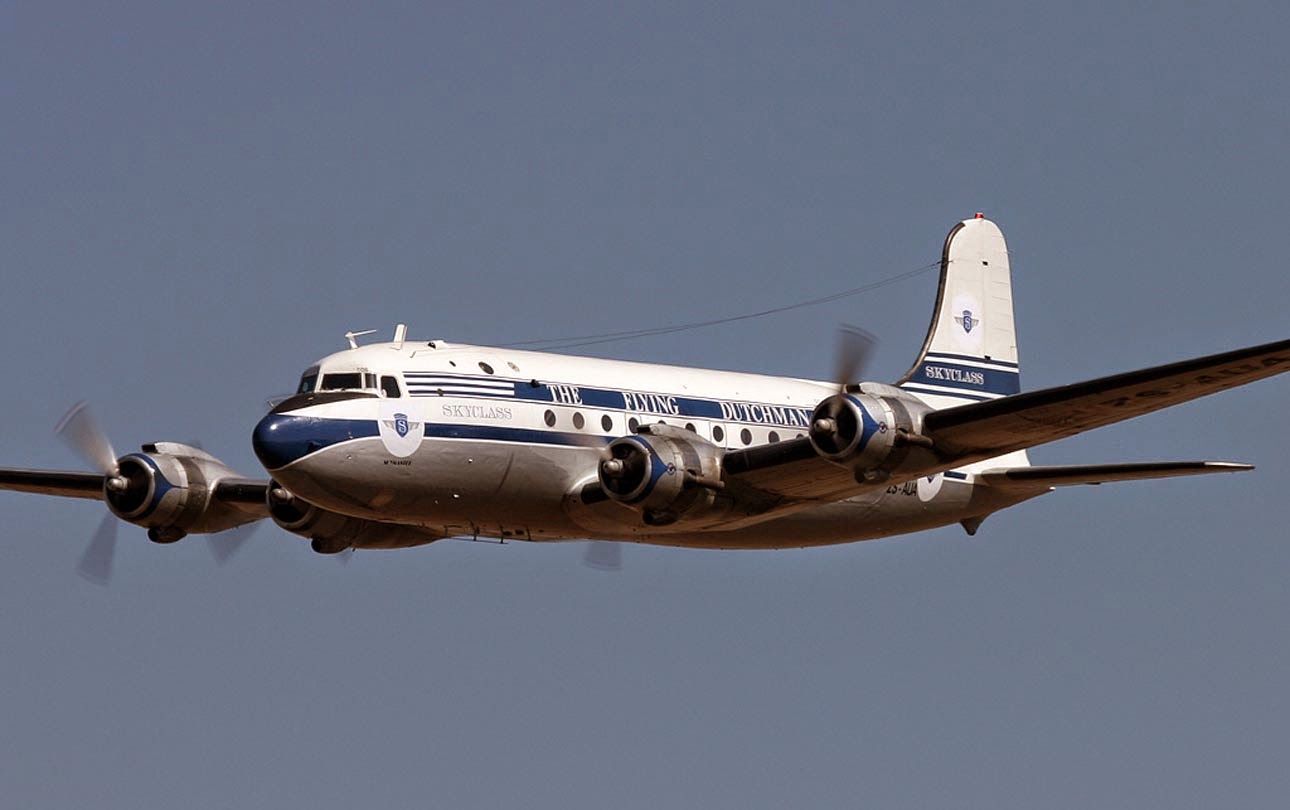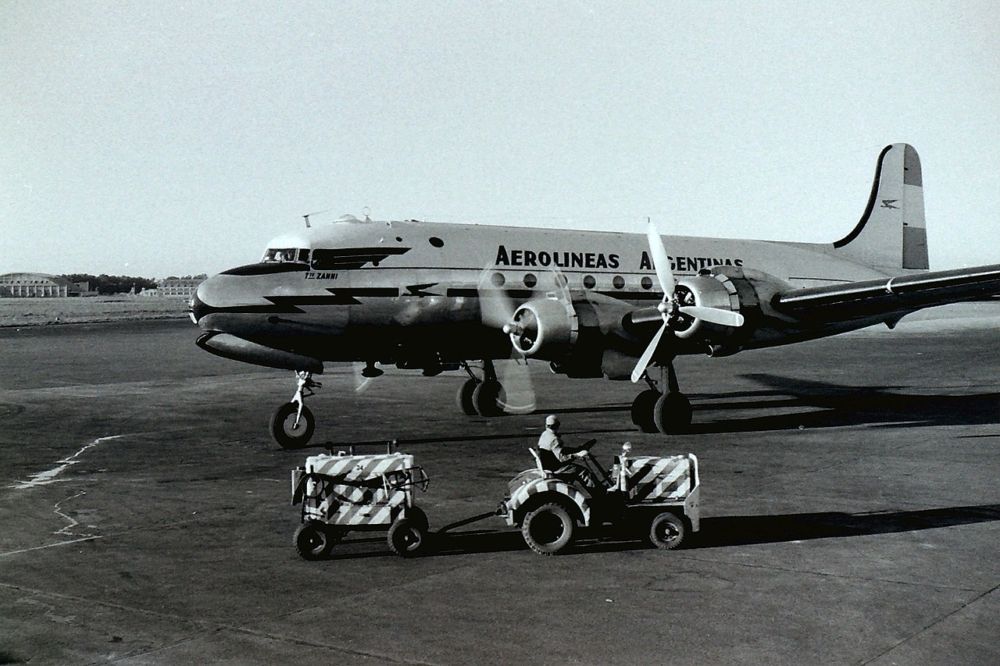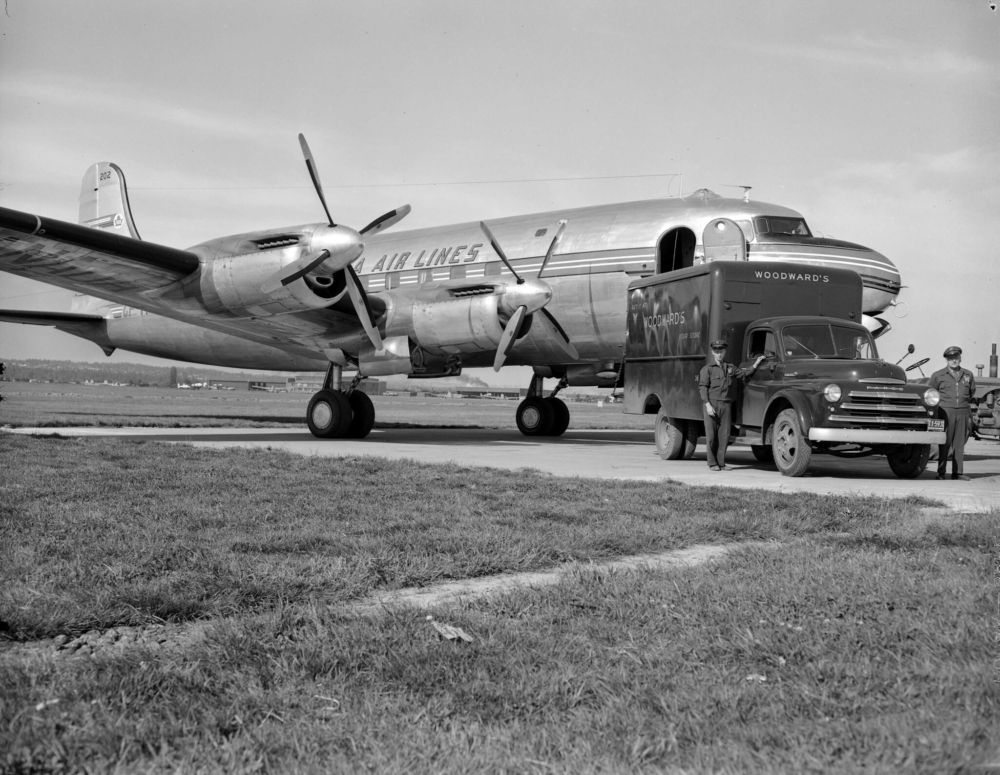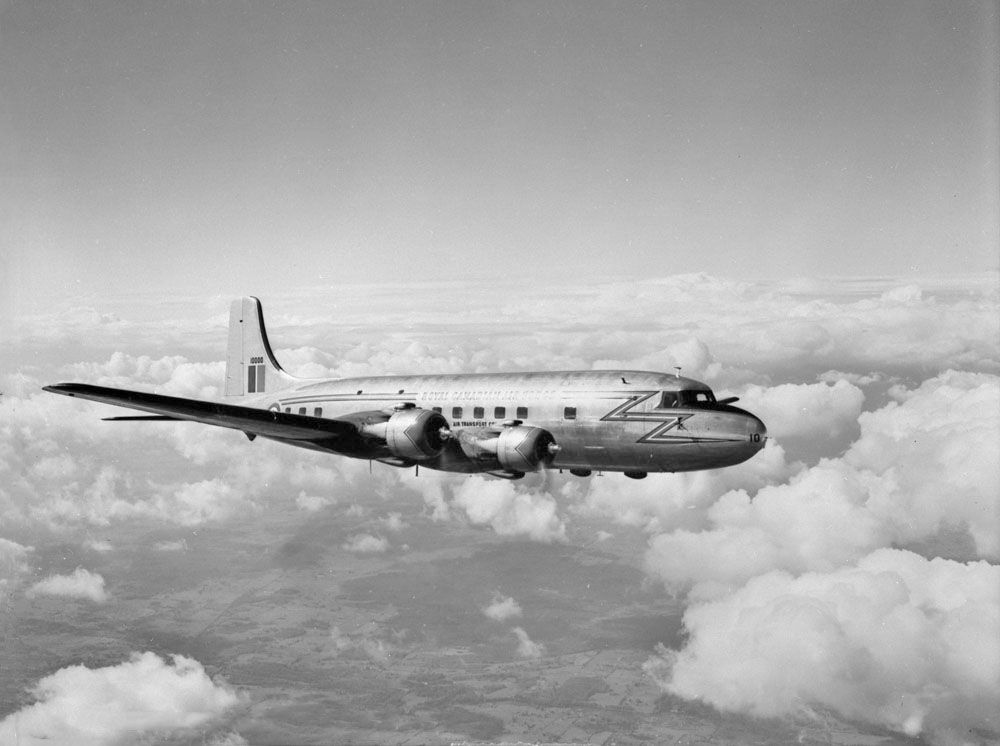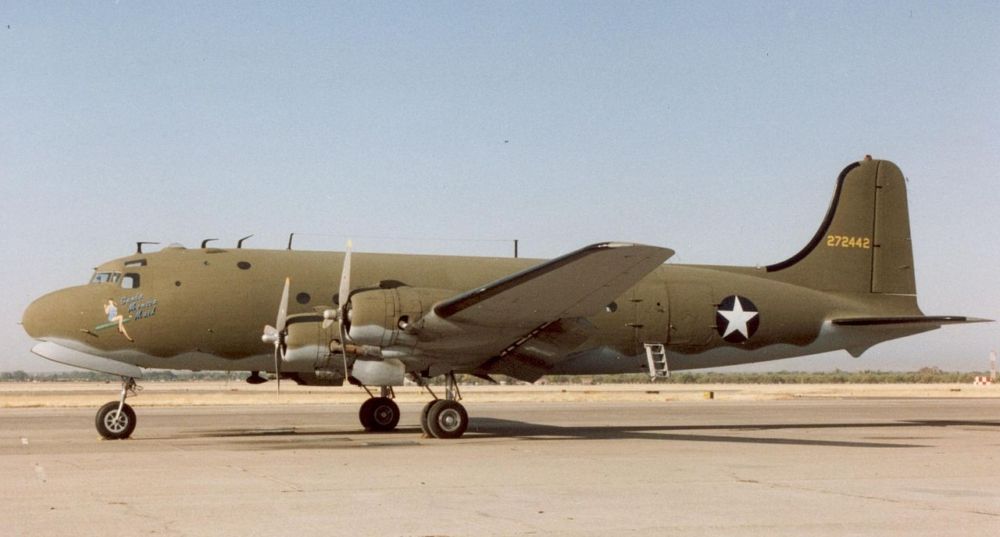The Douglas DC-4 was a key piston-engined airliner that entered service in the 1940s. Boasting four engines, there were also military variants of the aircraft that, owing to the timing of the Second World War, actually ended up being far more numerous. Meanwhile, Canadair also developed an upgraded version of the type known as the North Star, which first flew just after the conflict had ceased. But how exactly do the two designs compare?
How the DC-4 came to be
The DC-4's story actually began in the late 1930s, before the outbreak of the Second World War. At this time, US planemaker Douglas developed an experimental airliner also known as the DC-4. It renamed this to the DC-4E once the DC-4 that we know today came to be.
The DC-4E's roots can be traced back to 1935, when United Airlines reportedly requested that Douglas developed a larger and more sophisticated alternative to its existing DC-3. This was despite the fact that the DC-3 only made its first flight in December that year.
In the end, Douglas found that the DC-4E's initial 52-seat design was simply too large to offer economically viable operations. Armed with a series of requested alterations from partner airlines, it developed a new aircraft known as the DC-4A, which later became known as just the DC-4. This piston-engined design entered service with United in 1942.
By then, the US's involvement in the Second World War prompted Douglas to halt passenger DC-4 production. This resulted in the development of two military variants. These transport aircraft were known as the C-54 'Skymaster' and the R5D. Production of passenger-carrying DC-4s resumed after the war, and eventually ceased in August 1947.
Stay informed: Sign up for our daily and weekly aviation news digests.
The rise of the Canadair North Star
With post-war DC-4 production focusing once again on passenger-carrying examples, across the border, Montréal-based manufacturer Canadair was also getting in on the act. Specifically, the company developed an upgraded version of the DC-4 that it called the North Star. It inherited this project from Canadian Vickers in November 1944.
The aircraft's official name was actually the Canadair Four. However, operators including Trans-Canada Air Lines (TCA) and the Royal Canadian Air Force (RCAF) knew these planes as North Stars. Meanwhile, Canadian Pacific Airlines used the official Canadair Four title, while the British Overseas Airways Corporation (BOAC) called them Argonauts.
The main difference between the DC-4 and the North Star was the fact that the latter was re-engined with Rolls-Royce Merlin 626 V-12s. These enabled higher speeds than those achieved with the original DC-4's Pratt & Whitney R-2000-2SD13-G Twin Wasp radial piston engines.
An eagle-eyed Simple Flying reader also notes that the North Star's higher service ceiling of 29,500 feet gave TCA increased clearance when flying over the Rocky Mountains. It benefited from a pressurized cabin, which allowed it to fly higher without passengers requiring oxygen. Meanwhile, standard DC-4s were not built with pressurized cabins.
Performance and specifications
It is important to note that there were several other differences between the DC-4 and the North Star. For example, the Canadian alternative also had a shorter fuselage, and borrowed aspects from other Douglas designs such as the C-54 and the DC-6.
However, the North Star's selling point was its higher speed, which came about due to its new engines. The original DC-4 typically cruised at 365 km/h (197 knots), with a maximum cruise speed was 396 km/h (214 knots). Its outright top speed was 450 km/h (240 knots).
Meanwhile, its high-speed Canadian counterpart comfortably outranked these figures, boasting a rapid typical cruise speed of 523 km/h (282 knots). As you can see, this is some 17.5% faster than the DC-4's outright maximum speed. Its range was also further by a similar ratio, clocking in at 6,210 km (3,350 NM). The DC-4 only managed 5,300 km (2,900 NM).
Both designs shared the same 35.81-meter wide wingspan. The DC-4 was longer, measuring 28.60 meters long compared to the North Star's 28.54. The North Star seated 55 passengers, but the DC-4 could seat between 44 and 88 depending on the density.
Sales figures
There is little to split the two designs in terms of sales figures when it comes to the pure passenger-carrying versions of each model. Neither design hit three figures, with Douglas producing 80 passenger-specific DC-4s. Meanwhile, Canadair produced 71 North Stars, including those made for the military. This is where the designs differ.
Of course, it can be argued that the DC'4s commercial success in a military sense owes a lot to the fact that it was in production during the Second World War. This can't be said for the North Star, which first flew in July 1946. Nonetheless, the fact that Douglas churned out almost 1,200 military DC-4s in just five years is a very impressive statistic.
Service lives
Curiously, the Canadair North Star had a far shorter service life than the DC-4, despite boasting more favorable specifications. Of course, a key factor in this is the sheer number of ex-military DC-4s that later flew in civilian roles. There's certainly strength in numbers when it comes to getting a class of aircraft to have a long service life!
All in all, the Canadair North Star lasted until the 1960s in a military capacity. In terms of civilian operations, it soldiered on until 1975. Today, just a single example remains in preservation. Meanwhile, the DC-4 ended up boasting far greater longevity.
Having entered service in 1942, the DC-4 remains active today, albeit in a minimal capacity. According to data from ATDB.aero, a single example of the piston-engined aircraft continues to fly to this day. Like many classic planes, it is based in Alaska. Currently registered as N3054V, Douglas built this vintage plane more than 76 years ago in 1945.
Having flown for various military operators, including the RAF and the USAF, it has since found work as a tanker. It presently flies for Alaska Air Fuel, with its most recent flight (at the time of writing) taking place on September 1st, according to RadarBox.com. Overall, it seems that the Douglas DC-4 was able to overcome the Canadair North Star's speed and range advantages to enjoy a longer and more commercially successful career.
Which do you prefer out of the Canadair North Star and the Douglas DC-4? Did you ever fly on either (or both) of these classic aircraft? Let us know your thoughts and experiences in the comments!

